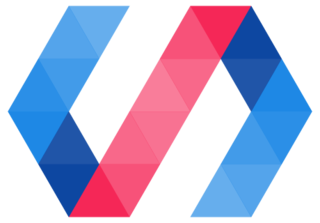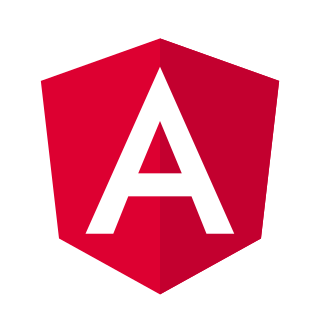Related Research Articles
JavaScript, often abbreviated as JS, is a programming language that conforms to the ECMAScript specification. JavaScript is high-level, often just-in-time compiled, and multi-paradigm. It has curly-bracket syntax, dynamic typing, prototype-based object-orientation, and first-class functions.
Java is a high-level, class-based, object-oriented programming language that is designed to have as few implementation dependencies as possible. It is a general-purpose programming language intended to let application developers write once, run anywhere (WORA), meaning that compiled Java code can run on all platforms that support Java without the need for recompilation. Java applications are typically compiled to bytecode that can run on any Java virtual machine (JVM) regardless of the underlying computer architecture. The syntax of Java is similar to C and C++, but has fewer low-level facilities than either of them. The Java runtime provides dynamic capabilities that are typically not available in traditional compiled languages. As of 2019, Java was one of the most popular programming languages in use according to GitHub, particularly for client-server web applications, with a reported 9 million developers.
Mathematical Markup Language (MathML) is a mathematical markup language, an application of XML for describing mathematical notations and capturing both its structure and content. It aims at integrating mathematical formulae into World Wide Web pages and other documents. It is part of HTML5 and an ISO standard ISO/IEC 40314 since 2015.
ECMAScript is a general-purpose programming language, standardised by Ecma International according to the document ECMA-262. It is a JavaScript standard meant to ensure the interoperability of web pages across different web browsers. ECMAScript is commonly used for client-side scripting on the World Wide Web, and it is increasingly being used for writing server applications and services using Node.js.
JScript is Microsoft's dialect of the ECMAScript standard that is used in Microsoft's Internet Explorer.
Netscape Plugin Application Programming Interface (NPAPI) is an application programming interface (API) that allows browser plugins to be developed. It was first developed for Netscape browsers, starting in 1995 with Netscape Navigator 2.0, but was subsequently adopted by other browsers. With the advent of HTML5, all major web browsers have removed support for 3rd party NPAPI plugins for security reasons. There are some smaller browsers such as Pale Moon and Waterfox Classic that retain support for NPAPI plugins.

C# is a general-purpose, multi-paradigm programming language encompassing static typing, strong typing, lexically scoped, imperative, declarative, functional, generic, object-oriented (class-based), and component-oriented programming disciplines.
TypeScript is a programming language developed and maintained by Microsoft. It is a strict syntactical superset of JavaScript and adds optional static typing to the language. TypeScript is designed for the development of large applications and transcompiles to JavaScript. As TypeScript is a superset of JavaScript, existing JavaScript programs are also valid TypeScript programs.

Node.js is an open-source, cross-platform, back-end JavaScript runtime environment that runs on the V8 engine and executes JavaScript code outside a web browser. Node.js lets developers use JavaScript to write command line tools and for server-side scripting—running scripts server-side to produce dynamic web page content before the page is sent to the user's web browser. Consequently, Node.js represents a "JavaScript everywhere" paradigm, unifying web-application development around a single programming language, rather than different languages for server-side and client-side scripts.
Dart is a programming language designed for client development, such as for the web and mobile apps. It is developed by Google and can also be used to build server and desktop applications.
Content Security Policy (CSP) is a computer security standard introduced to prevent cross-site scripting (XSS), clickjacking and other code injection attacks resulting from execution of malicious content in the trusted web page context. It is a Candidate Recommendation of the W3C working group on Web Application Security, widely supported by modern web browsers. CSP provides a standard method for website owners to declare approved origins of content that browsers should be allowed to load on that website—covered types are JavaScript, CSS, HTML frames, web workers, fonts, images, embeddable objects such as Java applets, ActiveX, audio and video files, and other HTML5 features.
Wakanda is a JavaScript platform to develop and run web or mobile apps.

Cloud9 IDE is an Online IDE, published as open source from version 2.0, until version 3.0. It supports multiple programming languages, including C, C++, PHP, Ruby, Perl, Python, JavaScript with Node.js, and Go.
AngularJS is a JavaScript-based open-source front-end web framework for developing single-page applications. It is maintained mainly by Google and a community of individuals and corporations. It aims to simplify both the development and the testing of such applications by providing a framework for client-side model–view–controller (MVC) and model–view–viewmodel (MVVM) architectures, along with components commonly used in web applications and progressive web applications.
asm.js is a subset of JavaScript designed to allow computer software written in languages such as C to be run as web applications while maintaining performance characteristics considerably better than standard JavaScript, which is the typical language used for such applications.
Kotlin is a cross-platform, statically typed, general-purpose programming language with type inference. Kotlin is designed to interoperate fully with Java, and the JVM version of Kotlin's standard library depends on the Java Class Library, but type inference allows its syntax to be more concise. Kotlin mainly targets the JVM, but also compiles to JavaScript or native code ; e.g., for native iOS apps sharing business logic with Android apps. Language development costs are borne by JetBrains, while the Kotlin Foundation protects the Kotlin trademark.
The Windows Library for JavaScript is an open-source JavaScript library developed by Microsoft. It has been designed with the primary goal of easing development of Windows Store apps for Windows 8 and Windows 10, as well as Windows Phone apps for Windows Phone 8.1, Windows 10 Mobile and Xbox One applications using HTML5 and JavaScript, as an alternative to using XAML and C#, VB.NET or C++ (CX).

Polymer is an open-source JavaScript library for building web applications using Web Components. The library is being developed by Google developers and contributors on GitHub. Modern design principles are implemented as a separate project using Google's Material Design design principles.

Angular is a TypeScript-based free and open-source web application framework led by the Angular Team at Google and by a community of individuals and corporations. Angular is a complete rewrite from the same team that built AngularJS.
JS++ is a programming language for web development that extends JavaScript with a sound type system. It includes imperative, object-oriented, functional, and generic programming features.
References
- ↑ "Angular 2 sera basé sur TypeScript : convergence de AtScript et TypeScript 1.5, c'est une collaboration entre Google et Microsoft". Developpez.com (in French). Retrieved 3 May 2016.
- ↑ "Miško Hevery - Keynote on AtScript at ng-europe 2014". YouTube. October 28, 2014. Retrieved January 28, 2015.
- ↑ "AtScript: Google's new superset JavaScript runtime - SD Times". SD Times. 27 October 2014. Retrieved 3 May 2016.
- ↑ "Google, Microsoft to combine TypeScript and AtScript in Angular 2 - SD Times". SD Times. 5 March 2015. Retrieved 3 May 2016.